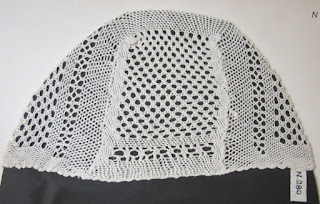Linen, made from the fibers in the stems of the flax plants, is one of the oldest textiles there are (at least in the Old World), so you're safe to use it even if you by any chance do Sumerian or Ancient Egyptian impressions!
Wikimedia Commons tell me that bunch of stalks before Ani represents a bale of flax. Whether or not that's the case in this particular artwork, the clothes he wears most probably are linen.
Egyptian linen was known to be so fine as to be transparent, an aspect of linen you may also be familiar with from fine caps, fichus and chemisettes in the later centuries.
And while your quintessential transparent white Regency dress is usually made of Indian cotton muslin, you can actually find some linen extants as well - taking that clothing article that much closer to the example of antiquity they were aiming at!
And throughout the centuries, it was a popular material for fine laces, more easily obtainable in Europe than silk.
Lace may be too much for you to recreate for the challenge (but isn't the one above adorable?), but of course these would often be attached to chemises and shirts, or separate collars, also made of linen.
Linen was a home-grown fibre in Europe, and as such, something that you find very often in peasant / folk costumes. One aspect of it I find particularly fascinating is that in several countries (or regions, specifically), women wore caps / bonnets made with the very ancient technique of sprang well into the 20th century. These were usually made with linen thread, although later also cotton (and I've unfortunately only tracked down cotton examples, but the style is the same).
Another use of linen completely hides the linen in your project. I mention it here because it often lands you with search results on museum sites that list "linen" among other materials, without the linen actually showing on the outside of the garment, so it's something to watch out for:
Linen was used extensively as a lining fabric underneath other fine materials - often, before the methods changed in the 19th century, you would drape the garment in the lining fabric, i.e. the linen, and then mount the silks or wools on top of this linen base.
This presentation on the Lengberg finds makes a case for it being the case back in the 15th century!
We discussed this particular application of linen with the moderators, and the final consensus was that if linen linings are a step towards greater historical accuracy for you, or you just happen to be working on a project like that right now, feel free to use it as a justification for your entry for this challenge.
Aside from the hidden linings, medieval depictions show white accessories like headwraps and aprons that would have definitely been made of linen.
And you can, of course, totally justify your linen linings if your outer fabric also happens to be linen!
But linen is also known as a nice material to wear in summer heat, and it was used that way in the past, unlined, in articles of clothing that were otherwise usually comprised of far more layers.
It's also known to be good at wicking moisture (that's part of what makes it nice for summer), and that, together with its ability to withstand repeated washings, made it an ideal material for underclothes like chemises and shirts.
Which ties us neatly into the other interpretation of this challenge: underwear.
Especially if it happens to be made of linen. ;-)
If you're going the underwear route, you don't necessarily have to use linen the fibre, though (it's not always easy to find in the correct weight for fine underwear these days). It is, however, the most accurate material for the earlier periods.
From cca the end of the 18th century onwards, you find cotton being used in the same underwear applications as linen fairly often.
And of course, for certain things you could use silk.
Or even, as a more affordable option in the 20th century, viscose / rayon.
And if you're currently in the cold part of the world, or on the other hand would like to prepare for when your hemisphere is plunged into winter, you could even use wool.
Just please don't take the interpretation even further and don't make household linen instead! The HSM is meant for garments or accessories worn by a living person, normally not for other types of sewing. (Some challenges, like the Sewing Kit challenge this year, may specify you can also make something else, but those are only the exceptions proving the rule!)
Hopefully that still offers you a wide choice of things to pick your project from for this challenge. Happy creating!
(You can search, on museum sites, not only for "linen" but also "flax" - the term for the plant - or "bast" - the general term for plant fibres like linen. On different language sites it depends on the particular language the site is using, of course...
On Czech sites like esbirky.cz, you can search for "len" - the material / fibre, or "lněný" / "lněná" / "lněné" - the adjectives. The downside to the adjectives is that, depending on the algorithm, you may accidentally end up with wool and cotton objects, too... "vlněný" and "bavlněný", respectively. Yep, Czech is fun!)










